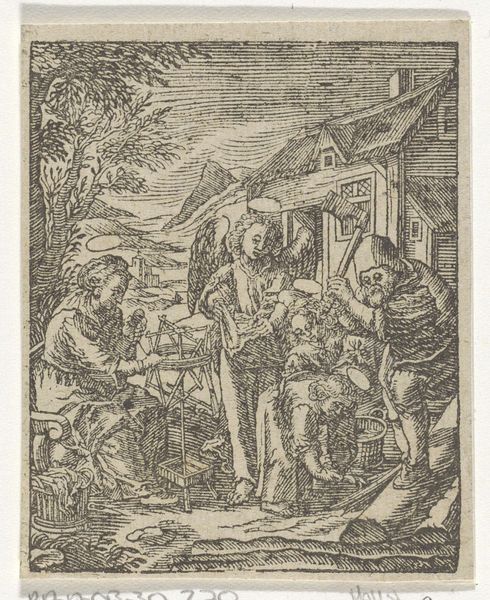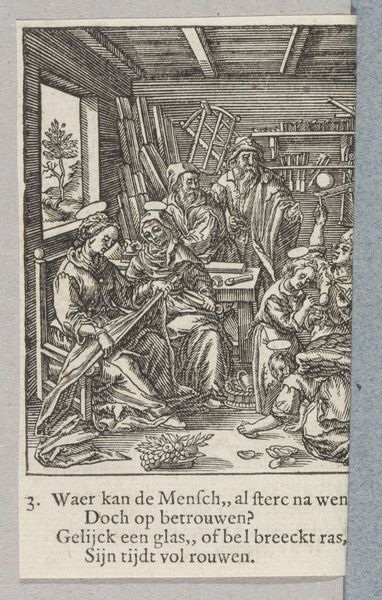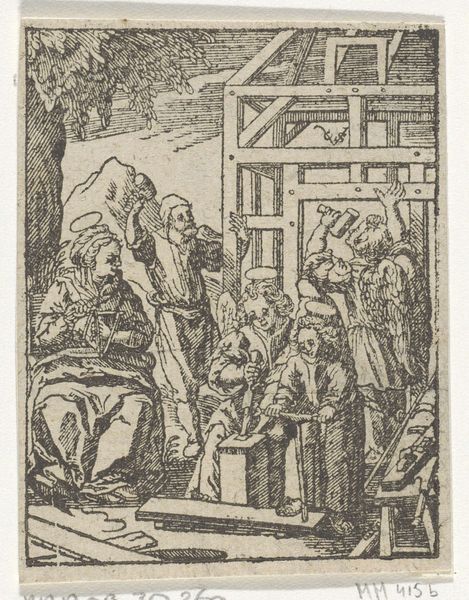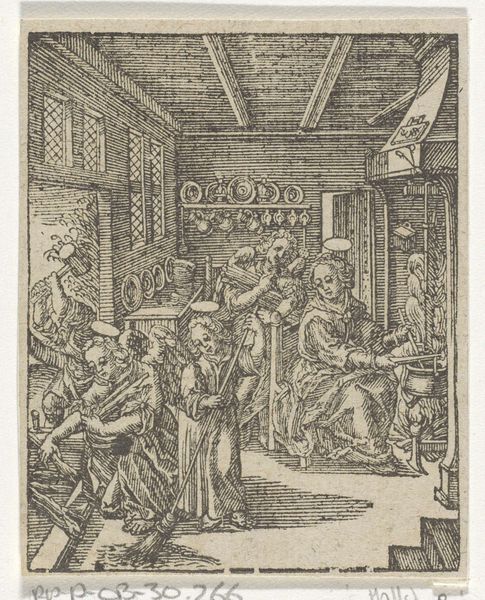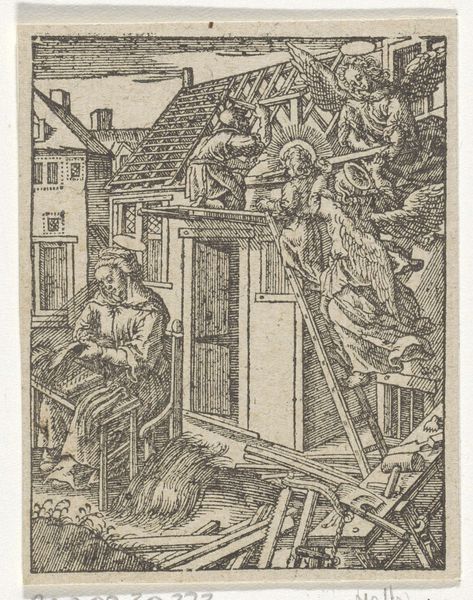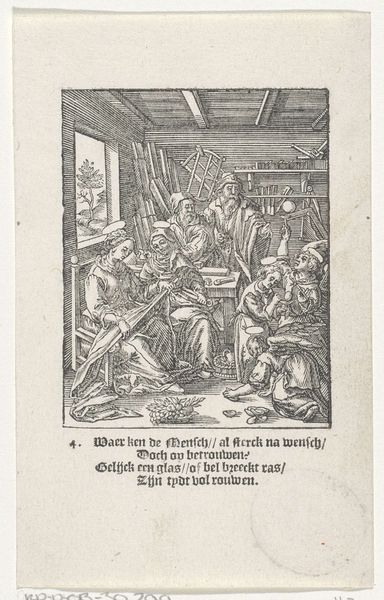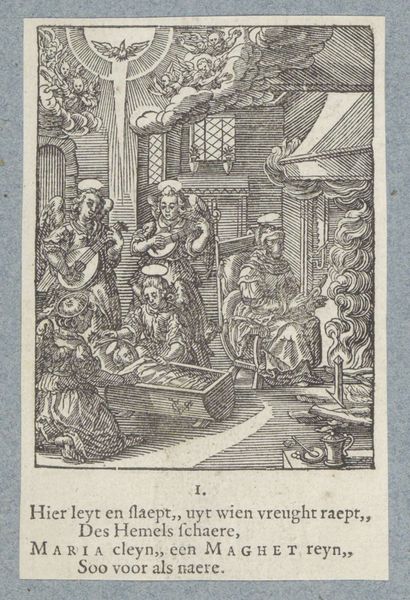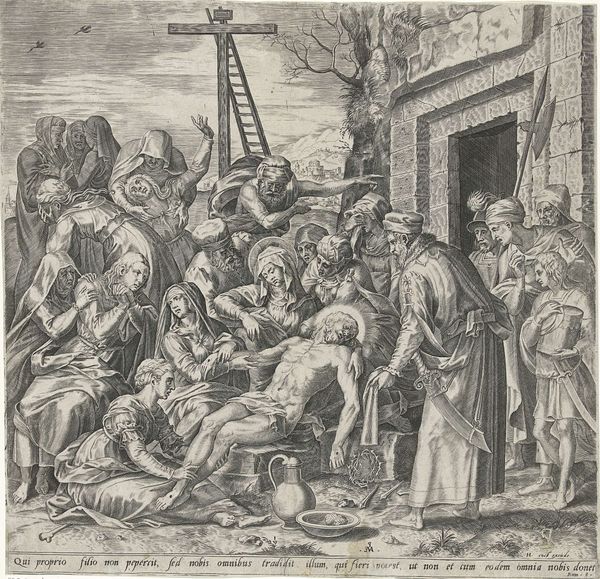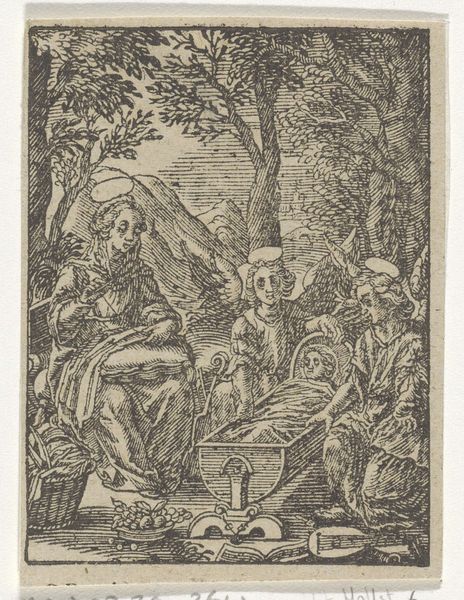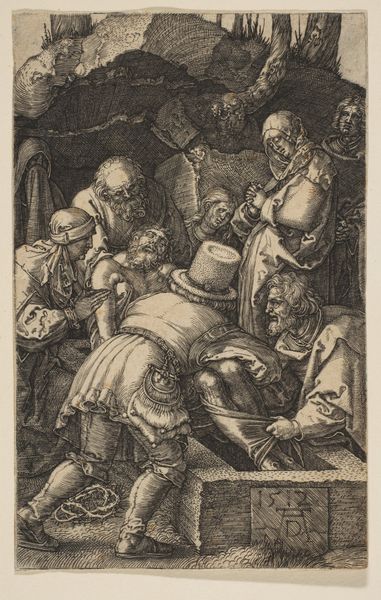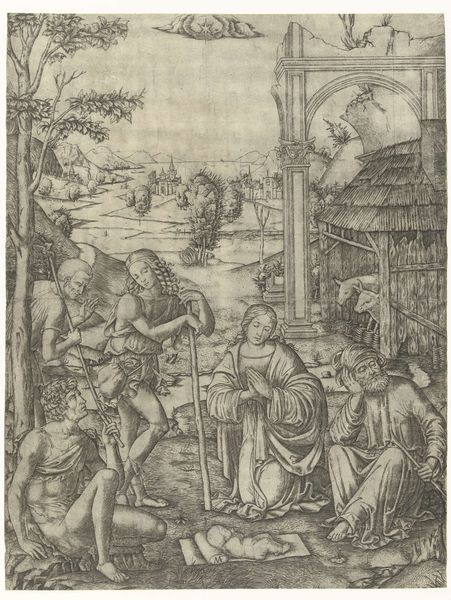
drawing, ink, pen
#
drawing
#
medieval
#
narrative-art
#
pen drawing
#
pen illustration
#
pen sketch
#
figuration
#
ink
#
pen
#
genre-painting
Dimensions: height 86 mm, width 68 mm
Copyright: Rijks Museum: Open Domain
Curator: I find this pen and ink drawing by Christoffel van Sichem II, entitled “Christuskind blaast zeepbellen,” or “Infant Christ blowing bubbles,” quite captivating. It was created sometime between 1617 and 1658, and is now held at the Rijksmuseum. What strikes you initially about this particular work? Editor: My first impression is that it has a somber and perhaps critical tone, despite depicting what appears to be a mundane, familial scene. The expressions seem grave, the interior space feels cramped. I wonder about the commentary at play here. Curator: Let’s begin by considering the formal composition. Van Sichem II's deployment of line is meticulous. Note how the cross-hatching builds depth, creating a remarkable tonal range within the constraints of the medium. Editor: Agreed. But this scene is far from neutral. Observe how the figures are arranged. We see an enclosed space with men standing apart from a group of women surrounding what must be a child being attended to by a midwife perhaps. Given the title, the boy blowing bubbles is supposed to be the infant Christ? Curator: Indeed, the central figure engages with a symbolic act—blowing bubbles. The bubble, historically, is a memento mori, representing the fleeting nature of life, its fragility and transience. In the context of Christ's infancy, this imbues the work with considerable weight, doesn’t it? Editor: Absolutely. This reinforces my feeling that the artwork isn't just depicting a pleasant domestic moment, but embedding that scene within a meditation on mortality. But more than this, is this scene also offering comment on domestic labor and social divisions of labor and community in the early 17th century? Who is represented in the room and how are these activities deemed valuable? What does it mean to connect these actions to an infant Messiah? Curator: I would agree with you, especially regarding that point concerning mortality, to examine how Sichem’s utilization of line weight to highlight and diminish certain elements constructs a compelling dynamic tension within the plane. Observe how a more solid area balances with those more sketch-like or feathery. This also draws us to that tension between realism and symbolic abstraction. Editor: So, through his deliberate application of a detailed yet delicate medium, Sichem layers philosophical and social meanings within what may, at first, seem like a genre scene. Curator: Precisely. It's a testament to the complexity achievable within the graphic arts. It really brings the entire history to life through those textures and forms. Editor: Ultimately, by analyzing both form and content, we start to uncover the rich dialogue this work proposes between lived experience and more universal, transcendental themes.
Comments
No comments
Be the first to comment and join the conversation on the ultimate creative platform.
